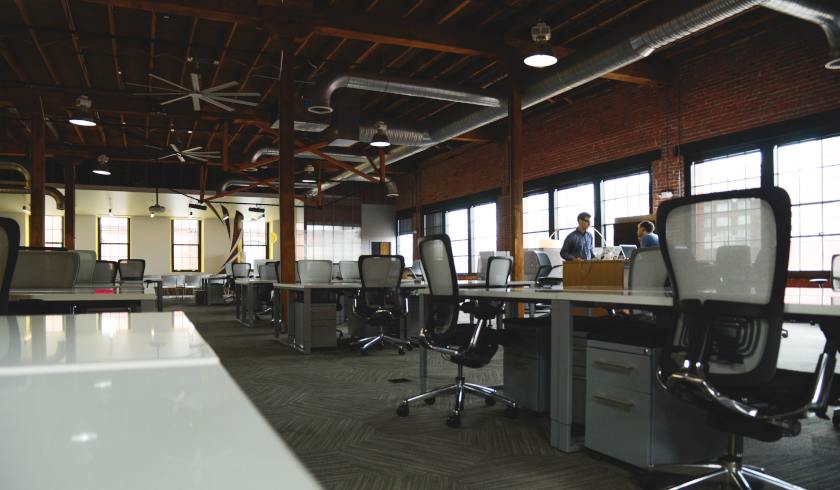The ins and outs of office investment
Commercial property investment is a strategy that works but far too many people attempt it too early. The truth of the matter is that it is a more advanced strategy and involves a variety of fundamentals.

It is also more cyclical and there can be deeper periods of flat conditions and vacancies compared to residential, plus it is tied very closely to economic conditions and the infrastructure that is nearby.
Office investment pros and cons
When it comes to investing in office spaces, that specific market generally becomes popular when the residential sector is near its peak.
Residential investors have more confidence because of their strong returns, which can flow on to more business activity as well as more money flowing through the economy generally.
All of these factors, of course, benefit businesses because consumers feel like they have more money to spend, which kicks off a stronger commercial sector.
Obviously, the key is to buy counter-cyclically and ride the market upswing.
Some of the positives of office investment include your tenant being responsible for paying all of your outgoings (apart from landlord insurance and sinking fund contributions in your strata levies).
That means that your yield is higher because the only deductions that come out of rent are these costs, plus property management fees, which is significantly less than the outgoings involved in residential real estate investment.
Another advantage is longer lease periods, with three to five years usually the minimum, which can help to secure your cash flow.
However, on the flip side, there are generally much longer periods of vacancy in office investments.
Even in a hot market, your minimum vacancy period could be at least a month or so.
In slower market conditions, it can be many months, which can play havoc with your cash flow when you don’t have a tenant. Obviously, all of the outgoings are exposed to you.
Another is that, depending on the capital city location, yields can be anywhere between six to nine per cent yields.
With that in mind, I believe the best office investments at this point in the cycle would be in Sydney, Melbourne and Canberra.
However, there aren’t many strata subdivided office spaces actually available.
In Parramatta, NSW for example, there are only a handful of strata-titled buildings so therefore the price is at an absolute premium and that means that it is not an option for many investors.
A better strategy might be to consider other areas with lower price points that also have a strong office presence as well as robust demand.
Supply and finance issues
Office investment also can be significantly impacted by the economy, such as during the GFC when a lot of businesses went under.
That meant that the number of potential tenants dried up and investors were left with office spaces that they could not rent out.
Another issue is that if a business goes bankrupt, you will need to rely on landlord insurance to recoup your financial losses during extended periods of vacancy.
That said, like all investments, one way of increasing your chances of attracting new tenants and keeping existing ones is to ensure the space will be in demand even in slow market conditions.
This includes investing in office spaces that will be attractive to the most businesses such as being the right size and having superior views, such as over a lake in a business park.
In a slow market, tenants have more choice, so they will opt for the spaces with the best views and natural light as well as with the least noise.
A factor you also must consider is the impact that office investment can have on your borrowing capacity.
While it can achieve seven per cent plus net yields, lenders generally require a larger deposit than they do with residential investment.
Buying an office space will usually require a deposit of 20 to 30 per cent of the purchase price.
Some lenders also shy away from offices that are smaller than 50 square metres; however, that size is usually too big for most ideal office spaces.
Commercial loans are usually 20-year terms, not 30 years like they are in residential, which means that the repayments are higher.
If that’s not all, lenders will also use 60 per cent of the estimated rent when they assess your loan application.
So, as you can see, some investors believe that the higher yields will increase their borrowing capacity when the opposite is in fact true.
Liquidity essential
The trick to securing the best office space is to ensure you can offload it to an owner-occupier if needed and that means it should have good views as well as being in a building that has cafes, parking or public transport options nearby.
You should also keep the purchase price low enough so that you can offload it to other mum-and-dad investors if necessary.
There are decent office spaces available for sub $500,000 if you know where to look and you know what you’re doing.
At the end of the day, an office investment is a sound strategy as long as you still have ample borrowing capacity left after purchase, and you have enough residential investment runs on the board.
You can certainly supercharge your portfolio with office investment because it not only adds diversification, but also provides the opportunity to profit from commercial market conditions when the residential sector is taking a breather.

